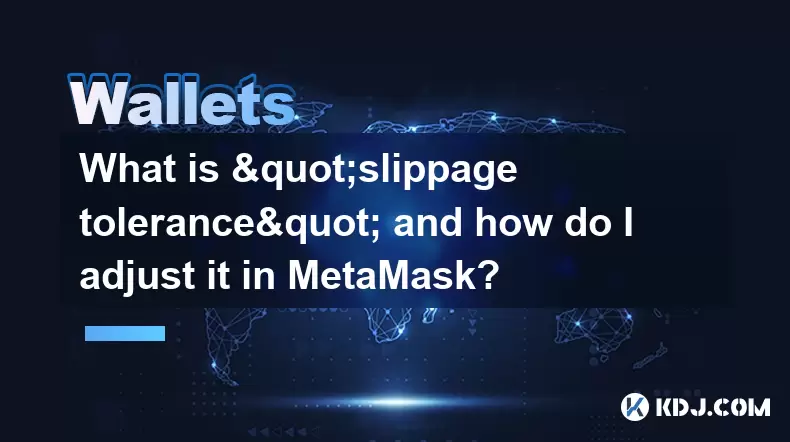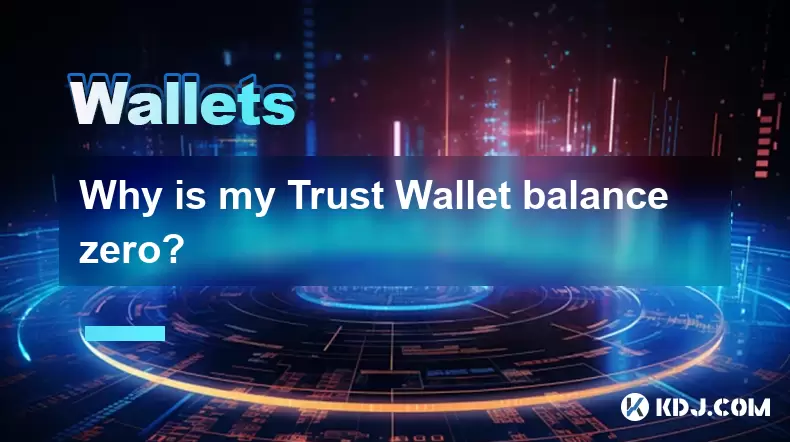-
 Bitcoin
Bitcoin $113000
-1.26% -
 Ethereum
Ethereum $3435
-3.79% -
 XRP
XRP $2.836
-5.53% -
 Tether USDt
Tether USDt $0.9997
0.00% -
 BNB
BNB $746.1
-1.80% -
 Solana
Solana $160.4
-3.48% -
 USDC
USDC $0.9997
0.00% -
 TRON
TRON $0.3206
-1.47% -
 Dogecoin
Dogecoin $0.1936
-6.02% -
 Cardano
Cardano $0.6980
-3.36% -
 Hyperliquid
Hyperliquid $37.28
-2.82% -
 Sui
Sui $3.340
-5.59% -
 Stellar
Stellar $0.3695
-5.87% -
 Chainlink
Chainlink $15.70
-3.74% -
 Bitcoin Cash
Bitcoin Cash $529.2
-2.94% -
 Hedera
Hedera $0.2304
-6.83% -
 Avalanche
Avalanche $21.00
-3.13% -
 Toncoin
Toncoin $3.620
0.53% -
 Ethena USDe
Ethena USDe $1.000
-0.01% -
 UNUS SED LEO
UNUS SED LEO $8.959
0.11% -
 Litecoin
Litecoin $105.0
-0.05% -
 Shiba Inu
Shiba Inu $0.00001185
-2.58% -
 Polkadot
Polkadot $3.495
-2.45% -
 Uniswap
Uniswap $8.808
-2.07% -
 Monero
Monero $292.9
-2.80% -
 Dai
Dai $0.9998
-0.01% -
 Bitget Token
Bitget Token $4.258
-1.43% -
 Pepe
Pepe $0.00001006
-4.02% -
 Cronos
Cronos $0.1273
-5.20% -
 Aave
Aave $250.1
-2.39%
What is "slippage tolerance" and how do I adjust it in MetaMask?
Slippage tolerance lets you set the maximum price deviation you'll accept when trading on DEXs, protecting you from unfavorable trades due to market volatility or low liquidity.
Aug 02, 2025 at 05:42 pm

Understanding Slippage Tolerance in Decentralized Exchanges
When trading cryptocurrencies on decentralized exchanges (DEXs) like Uniswap, SushiSwap, or PancakeSwap, slippage tolerance is a critical setting that determines the maximum price deviation you're willing to accept during a trade. Because DEXs rely on automated market makers (AMMs) instead of order books, the price of a token can fluctuate between the moment you initiate a trade and when it is executed on the blockchain. This fluctuation is known as slippage. Slippage tolerance allows you to set a threshold—expressed as a percentage—for how much the price can change before your transaction reverts to prevent unfavorable execution.
For example, if you're swapping ETH for DAI and the estimated output is 1,000 DAI, setting a slippage tolerance of 1% means you're willing to accept any result from 990 DAI to 1,000 DAI. If the price moves beyond that range due to market volatility or low liquidity, the transaction will fail rather than execute at a worse rate. This protects users from significant losses during trades, especially with less liquid tokens.
Why Slippage Occurs in Automated Market Makers
In AMM-based platforms, token prices are determined by mathematical formulas based on the ratio of assets in liquidity pools. When a large trade is executed, it significantly alters this ratio, causing the price per token to shift. This phenomenon is known as impermanent loss for liquidity providers and price impact for traders. The larger the trade relative to the pool size, the greater the price impact.
Slippage tolerance acts as a safeguard. Without it, a trade could execute at a much worse price than expected, especially during periods of high volatility or when trading low-cap tokens with shallow liquidity. For instance, attempting to swap 10 ETH for a small-cap token with a tiny liquidity pool might result in only a fraction of the expected tokens due to substantial price movement. By setting slippage tolerance, you define the acceptable range, ensuring your transaction only goes through if the output stays within your comfort zone.
Default Slippage Settings in MetaMask
MetaMask, as a non-custodial wallet, integrates directly with various DEXs and provides users with control over transaction parameters, including slippage tolerance. By default, MetaMask often sets slippage tolerance at 0.5%, 1%, or 2%, depending on the connected exchange and network conditions. These presets are designed to balance safety and transaction success rates under normal market conditions.
However, these defaults may not be suitable for all scenarios. Trading highly volatile tokens or executing large swaps might require adjusting the slippage tolerance manually. If the tolerance is too low, transactions may fail repeatedly due to minor price movements. Conversely, setting it too high exposes you to the risk of receiving significantly fewer tokens than expected. Understanding how to modify this setting is essential for efficient and secure trading.
How to Adjust Slippage Tolerance in MetaMask
Adjusting slippage tolerance in MetaMask depends on the decentralized exchange you're using, as MetaMask itself does not store this setting independently—it reflects the options provided by the DEX interface. The process typically occurs within the swap interface of platforms like Uniswap or SushiSwap. Below are the detailed steps:
- Navigate to the DEX platform (e.g., app.uniswap.org) while connected to your MetaMask wallet.
- Initiate a token swap by selecting the input and output tokens.
- Locate the "Settings" or "Gear" icon, usually found in the top-right corner of the swap panel.
- Click on the icon to open the transaction settings menu.
- Look for the "Slippage Tolerance" section, which displays preset options like 0.5%, 1%, and 2%.
- Select "Custom" to manually enter a different percentage.
- Input your desired slippage tolerance, such as 3% or 5%, depending on market conditions and token liquidity.
- Confirm the change; the interface will now use this value for subsequent transactions.
After adjusting, any swap you initiate will include this tolerance level in the transaction data sent to MetaMask for approval. You can verify the slippage setting by reviewing the details in the MetaMask confirmation popup before signing.
When to Increase Slippage Tolerance
There are specific scenarios where increasing slippage tolerance becomes necessary. Trading low-liquidity tokens often requires higher tolerance because even small trades can cause significant price shifts. Similarly, during periods of high network congestion or extreme market volatility—such as during major news events or flash crashes—price movements can be rapid and unpredictable.
If you notice your transactions consistently failing with a "price impact too high" or "slippage exceeded" error, increasing the slippage tolerance may resolve the issue. For example, raising it from 1% to 3% or 5% could allow the trade to go through. However, this should be done cautiously. Always review the estimated output and price impact shown in the DEX interface. A high price impact combined with high slippage increases the risk of receiving far fewer tokens than anticipated.
Risks of High Slippage Tolerance
While increasing slippage tolerance can help complete trades, it also introduces potential risks. Malicious actors can exploit high tolerance settings through sandwich attacks, where they place trades before and after yours to manipulate the price and profit at your expense. In such cases, a high slippage tolerance allows the transaction to go through even at a severely disadvantaged rate.
Additionally, some scam tokens are designed with built-in mechanisms that cause extreme price drops during trades. If your slippage tolerance is set too high, you might end up with almost nothing after the swap. Always research the token and its liquidity pool depth before trading. Use tools like Etherscan or Dextools to analyze recent transactions and pool composition. Never set slippage tolerance above 10% unless you fully understand the risks and have verified the token's legitimacy.
Frequently Asked Questions
Can slippage tolerance be set globally in MetaMask?
No, slippage tolerance is not a global setting in MetaMask. It is controlled by the individual decentralized exchange you are using. Each DEX maintains its own interface for adjusting slippage, and MetaMask simply relays the transaction parameters set by that platform.
Does changing slippage tolerance cost more in gas fees?
No, adjusting slippage tolerance does not affect gas fees. The gas cost is determined by network congestion and transaction complexity, not by slippage settings. However, failed transactions due to low slippage will still consume gas, so setting an appropriate tolerance can save costs over time.
What happens if my transaction fails due to slippage?
If the market price moves beyond your slippage tolerance, the transaction will revert. You will not receive the tokens, but the original tokens will remain in your wallet. The gas fee paid to attempt the transaction is non-refundable, as it compensates miners or validators for processing the failed attempt.
Is it safe to use 10% slippage tolerance for new tokens?
Using 10% slippage tolerance is extremely risky and generally not recommended. While some new or low-liquidity tokens may require higher tolerance, setting it this high exposes you to significant losses from price manipulation or scams. Exercise extreme caution and only proceed if you have verified the token's contract and liquidity pool authenticity.
Disclaimer:info@kdj.com
The information provided is not trading advice. kdj.com does not assume any responsibility for any investments made based on the information provided in this article. Cryptocurrencies are highly volatile and it is highly recommended that you invest with caution after thorough research!
If you believe that the content used on this website infringes your copyright, please contact us immediately (info@kdj.com) and we will delete it promptly.
- Bitcoin, XRP, and the Price Drop Blues: What's Shakin' in Crypto?
- 2025-08-03 00:30:12
- Cold Wallet, Troncoin, and Shiba Inu: Navigating Crypto Opportunities in the Concrete Jungle
- 2025-08-03 01:51:38
- Crypto Presales: Navigating the Hype with BlockchainFX and Beyond
- 2025-08-03 01:51:39
- Bank of America, Ripple, and RLUSD: A New Era in Digital Finance?
- 2025-08-03 00:30:12
- Bitcoin Strategy: Saylor's Not Hoarding, He's Building an Empire
- 2025-08-02 22:30:12
- Bitcoin Bloodbath: Macro Pressures and Liquidations Unleash Crypto Chaos
- 2025-08-02 22:30:12
Related knowledge

What is a watch-only wallet in Trust Wallet?
Aug 02,2025 at 03:36am
Understanding the Concept of a Watch-Only WalletA watch-only wallet in Trust Wallet allows users to monitor a cryptocurrency address without having ac...

How to switch between networks in Trust Wallet?
Aug 02,2025 at 12:36pm
Understanding Network Switching in Trust WalletSwitching between networks in Trust Wallet allows users to manage assets across different blockchains s...

How to check my full transaction history on Trust Wallet?
Aug 02,2025 at 09:24am
Understanding Transaction History in Trust WalletTrust Wallet is a widely used non-custodial cryptocurrency wallet that supports a broad range of bloc...

Why is my Trust Wallet balance zero?
Aug 02,2025 at 03:49am
Understanding Trust Wallet Balance Display IssuesIf you're seeing a zero balance in your Trust Wallet despite knowing you've previously received or se...

What happens if I send crypto to the wrong network in Trust Wallet?
Aug 02,2025 at 07:22pm
Understanding Network Compatibility in Trust WalletWhen using Trust Wallet, it's essential to understand that different cryptocurrencies operate on di...

Where can I find my Trust Wallet address?
Aug 02,2025 at 06:07pm
Understanding Your Trust Wallet AddressYour Trust Wallet address is a unique identifier that allows others to send you cryptocurrency. It is a string ...

What is a watch-only wallet in Trust Wallet?
Aug 02,2025 at 03:36am
Understanding the Concept of a Watch-Only WalletA watch-only wallet in Trust Wallet allows users to monitor a cryptocurrency address without having ac...

How to switch between networks in Trust Wallet?
Aug 02,2025 at 12:36pm
Understanding Network Switching in Trust WalletSwitching between networks in Trust Wallet allows users to manage assets across different blockchains s...

How to check my full transaction history on Trust Wallet?
Aug 02,2025 at 09:24am
Understanding Transaction History in Trust WalletTrust Wallet is a widely used non-custodial cryptocurrency wallet that supports a broad range of bloc...

Why is my Trust Wallet balance zero?
Aug 02,2025 at 03:49am
Understanding Trust Wallet Balance Display IssuesIf you're seeing a zero balance in your Trust Wallet despite knowing you've previously received or se...

What happens if I send crypto to the wrong network in Trust Wallet?
Aug 02,2025 at 07:22pm
Understanding Network Compatibility in Trust WalletWhen using Trust Wallet, it's essential to understand that different cryptocurrencies operate on di...

Where can I find my Trust Wallet address?
Aug 02,2025 at 06:07pm
Understanding Your Trust Wallet AddressYour Trust Wallet address is a unique identifier that allows others to send you cryptocurrency. It is a string ...
See all articles

























































































